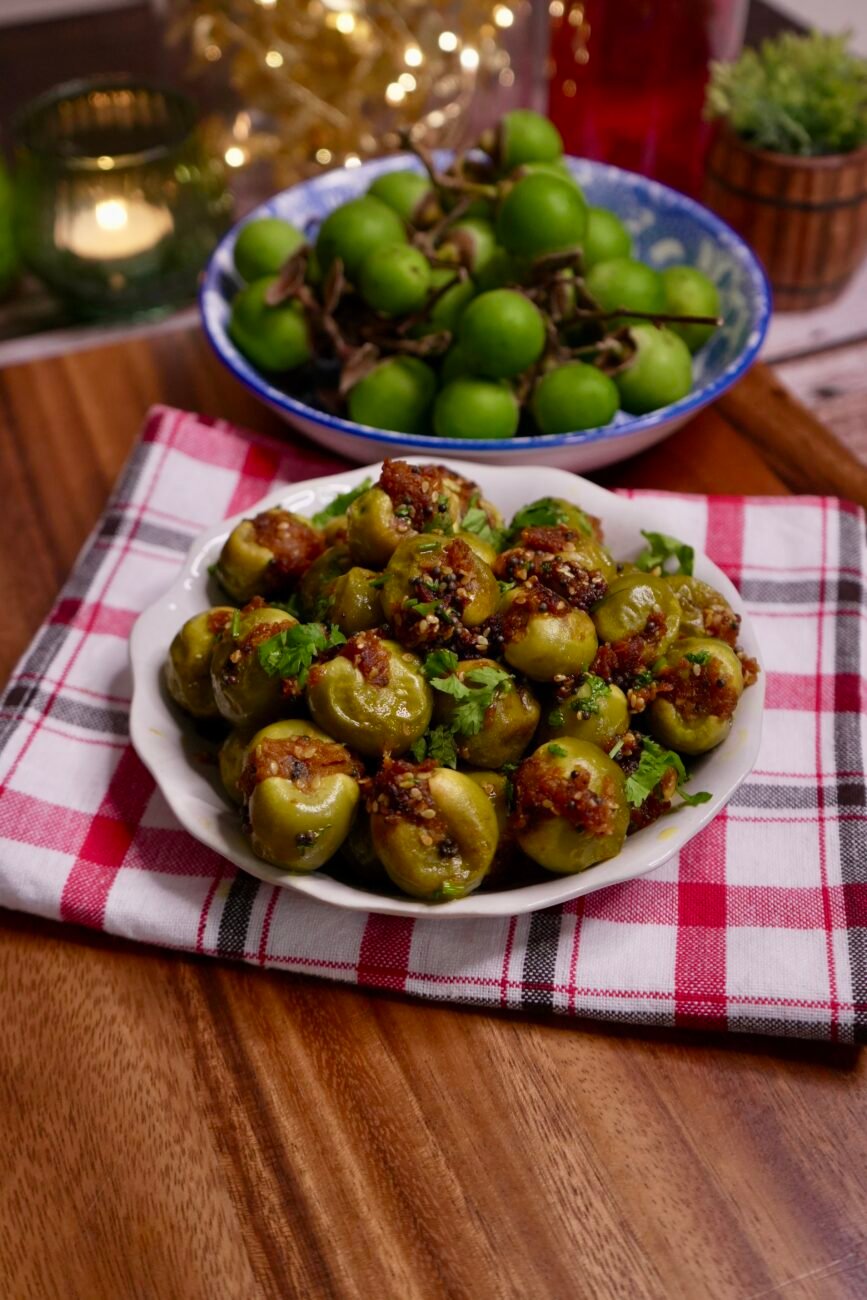Gunda Keri Ki Sabzi – A Flavourful Summer Delight with Health Benefits

Among the many seasonal treasures of Indian cuisine, Gunda Keri Ki Sabzi holds a special place. Made with gunda (also called lasoda or glue berry) and raw mango (keri), this dish is a flavorful and healthful preparation that captures the very essence of summer. Known for its tangy, spicy, and slightly sweet taste, gunda ki sabzi is a traditional Gujarati favorite that comes alive during the hotter months of the year when the gunda fruit is in season.
The Star Ingredient – What Is Gunda?
Gunda, or glue berry, is a sticky green fruit found in abundance during summer in India. It has a naturally fibrous texture and a mildly sour taste. The unique part about gunda is its sticky seed, which needs to be carefully removed before cooking. Despite this extra effort, the payoff is worth it. Gunda is packed with antioxidants, vitamin C, calcium, and natural gum, making it excellent for digestion, immunity, and joint health. It is also believed to have anti-inflammatory properties, which support overall well-being.
Raw Mango – A Tangy Twist with Cooling Effects
The addition of grated raw mango (keri) to the sabzi not only enhances its tangy flavor but also brings in several health benefits. Raw mango is rich in vitamin C, promotes hydration, improves digestion, and prevents heatstroke during extreme summer temperatures. It also helps balance the flavors of the dish, acting as a natural souring agent that reduces the need for added tamarind or lemon.
Guide to Gunda Keri Ki Sabzi
To begin with, wash and dry about 200–250 grams of fresh gunda. Removing the seeds is a slightly sticky process, so using a knife dipped in salt makes it easier and less messy. In a mixing bowl, combine grated raw mango with roasted besan (gram flour), turmeric powder, red chilli powder, coriander powder, garam masala, hing (asafoetida), salt, and a hint of sugar or jaggery. This aromatic masala is then stuffed inside each deseeded gunda.
Next, heat oil in a pan and prepare the tempering by adding mustard seeds, white sesame seeds, and hing. Once they crackle, gently add the stuffed gunda and toss them softly in the tadka. Cook this mixture on a low to medium flame for about 15–20 minutes until the gunda turns soft and its color changes, indicating it is perfectly cooked. Stir occasionally but avoid vigorous mixing to keep the stuffing intact.
For those who prefer a touch of gravy, adding well-beaten curd at the end—after switching off the heat—adds a delightful creamy texture and a cooling finish to the dish.
A Nutrient-Rich Side Dish for Indian Meals
This sabzi pairs beautifully with roti, paratha, or khakhra, making it a wholesome accompaniment for lunch or dinner. What makes gunda ki sabzi even more special is its nutritional profile. With the goodness of seasonal produce, the digestive support of spices like asafoetida and mustard seeds, and the fiber content from both gunda and raw mango, this dish is more than just delicious—it’s also nourishing.
Additionally, the use of roasted besan binds the stuffing and adds a nutty flavor while supplying plant-based protein. The light sweetness from jaggery balances the heat of red chilli, creating a perfectly rounded taste.
Conclusion
Gunda Keri Ki Sabzi is one of those rare traditional recipes that you can only enjoy during a specific season. It not only preserves the heritage of Indian culinary wisdom but also supports local, seasonal eating habits that are sustainable and healthy. It’s a dish that speaks of home, childhood, and the richness of regional flavors—especially from Gujarat and Rajasthan.
So if you spot fresh gunda in the market, don’t hesitate to bring them home and try this recipe. You’ll be surprised how a simple, seasonal vegetable can transform into such a memorable and nourishing dish.
